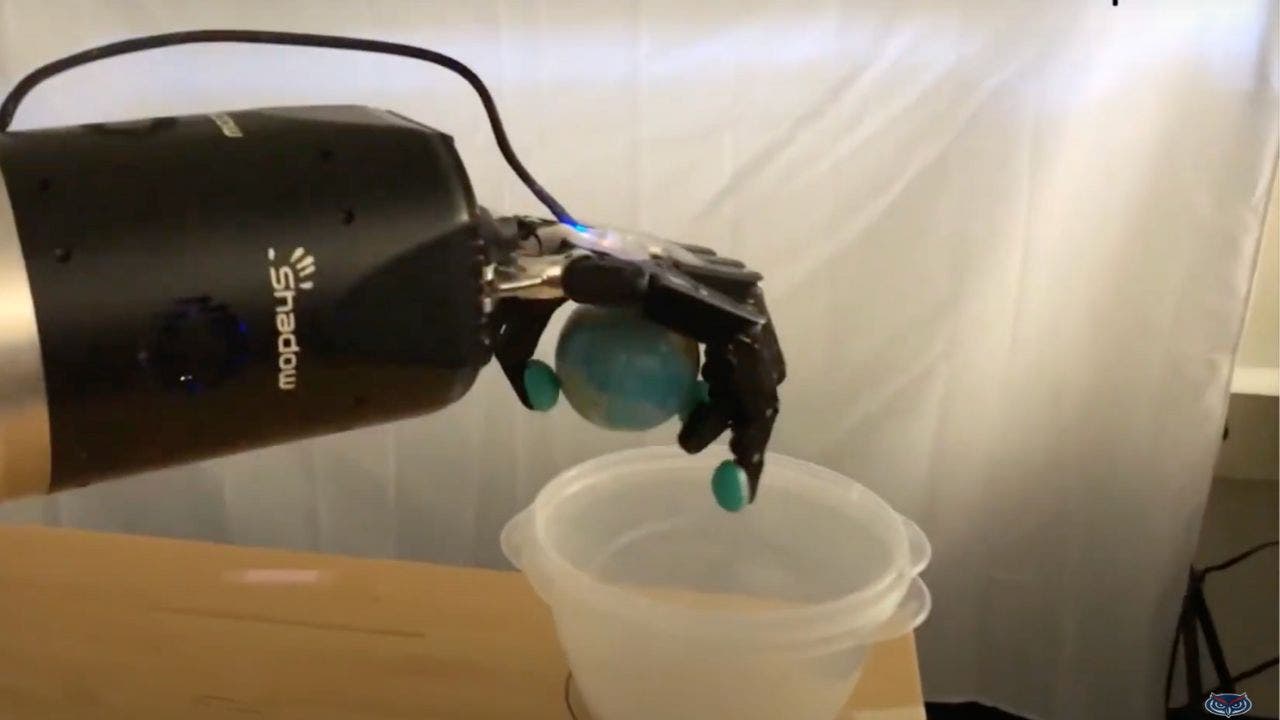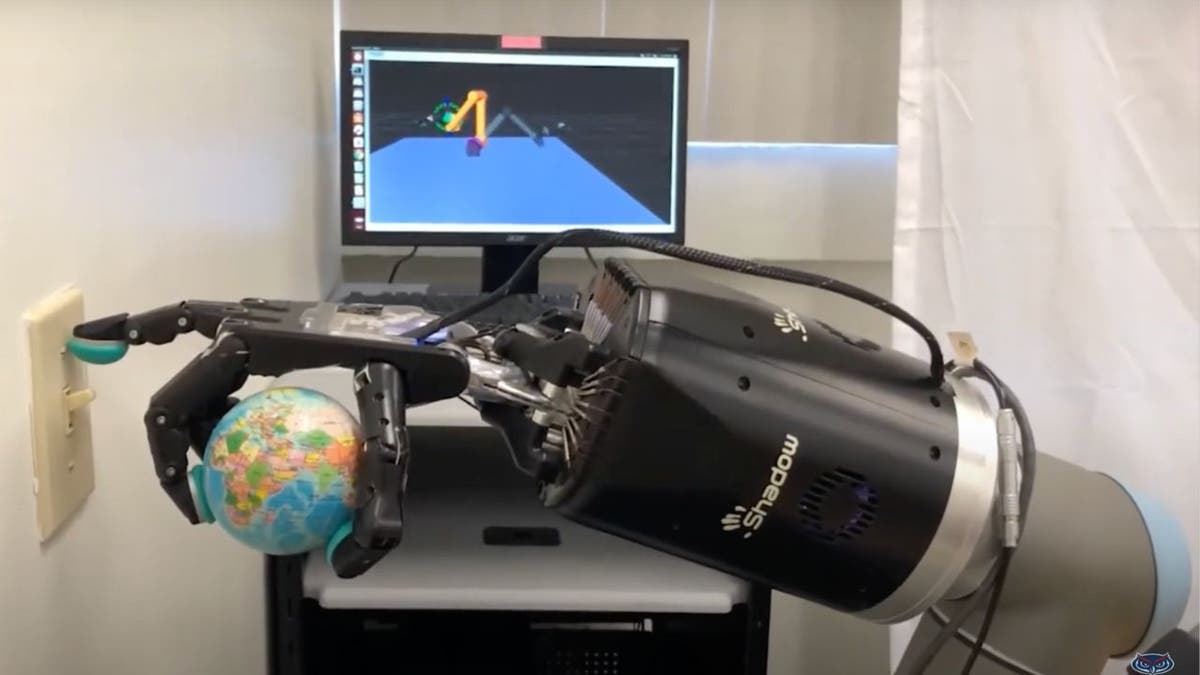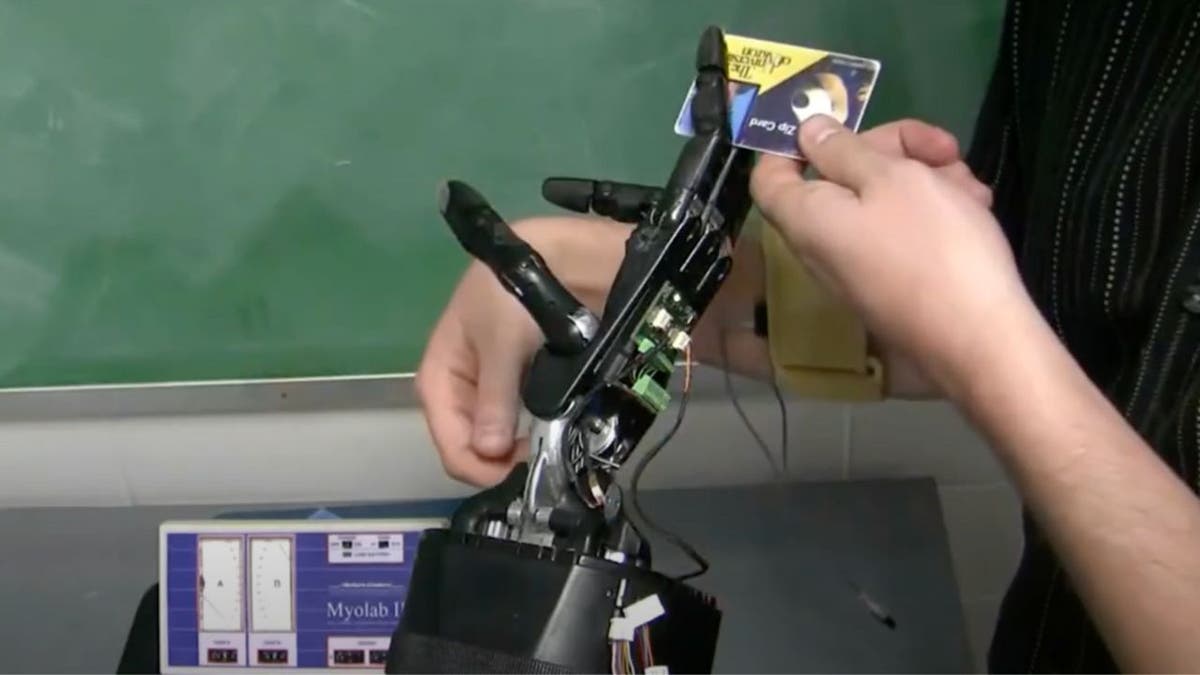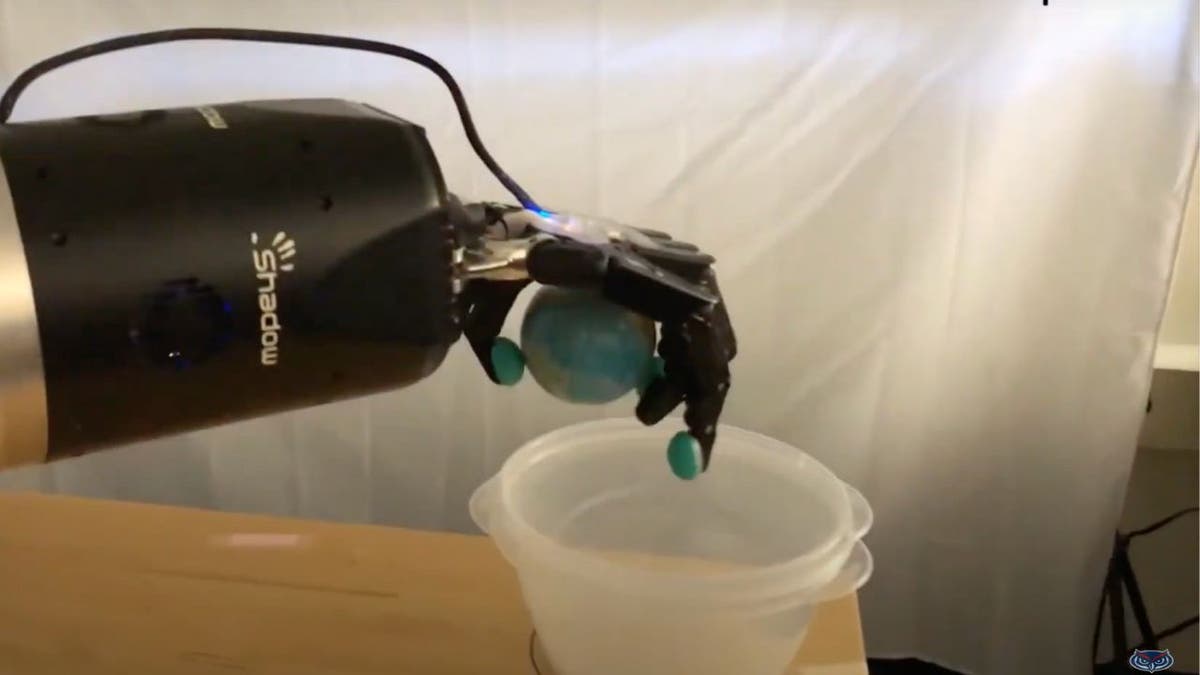Technology
Apple is pausing notification summaries for news in the latest iOS 18.3 beta
/cdn.vox-cdn.com/uploads/chorus_asset/file/25626687/DSC08433.jpg)
Apple has temporarily stopped showing notification summaries for news and entertainment apps as part of the iOS 18.3 developer beta released Thursday, according to reports from MacRumors and 9to5Mac. The Apple Intelligence-powered feature was criticized after it inaccurately summarized content from outlets such as the BBC.
Apple will reenable the notifications “with a future software update” as it continues to work on the feature, 9to5Mac reports. In the new beta, Apple will make it clear that the notification summary feature is a beta and “may contain errors.”
Additionally, 9to5Mac says Apple will let you disable notifications for specific apps from the lock screen or Notification Center in iOS 18.3 by “swiping, tapping ‘Options,’ then choosing the ‘Turn Off Summaries.’” The company will also use italicized text on the lock screen to make it easier to tell notification summaries and standard notifications apart.
The Verge reached out to Apple with a request for more information about these changes but didn’t immediately hear back.
Last month, the BBC called out Apple after the company’s notification summary feature wrongly summarized its coverage of the UnitedHealth shooter, suggesting the outlet reported that Luigi Mangione shot himself. Apple later said it would roll out an update to “further clarify when the text being displayed is summarization provided by Apple Intelligence.”

Technology
What to do if you think your PC has a virus

If you suspect your PC has a virus, it’s important to act quickly to remove it and protect your data.
Keep reading to discover the key warning signs and the steps you can take to address the issue.
Illustration of a virus on a PC (Kurt “CyberGuy” Knutsson)
Signs your PC has a virus
There are several red flags that could signal your computer may have a virus. One of the most common is if your computer starts running unusually slow.
I’M GIVING AWAY THE LATEST & GREATEST AIRPODS PRO 2
Another warning sign is the appearance of unfamiliar apps or programs that you don’t remember installing. Additionally, if your usual programs start crashing frequently or behaving oddly, it’s a cause for concern.
Finally, an overheating computer is a good reason to start investigating further.

A man frustrated at getting a virus on his PC (Kurt “CyberGuy” Knutsson)
WINDOW USERS ARE BEING TRICKED BY SNEAKY MALWARE SCHEME
Steps to remove a virus from your PC
Realizing you have a virus can be scary, but there’s no need to panic. Here’s what to do next.
1. Disconnect from the internet:
- This helps prevent the virus from spreading or communicating with its server.
2. Enter safe mode:
- Restart your PC and press F8 (or Shift + F8) before Windows starts to load.
- Select Safe Mode with Networking. This mode loads only the essential drivers and services.
3. Run a virus scan:
- Use strong antivirus software to run a full system scan.
- Install antivirus software as early as possible to safeguard against malicious links, phishing emails, ransomware and malware that can compromise your private information.
- The best way to safeguard yourself from malicious links that install malware, potentially accessing your private information, is to have antivirus software installed on all your devices. This protection can also alert you to phishing emails and ransomware scams, keeping your personal information and digital assets safe. Get my picks for the best 2025 antivirus protection winners for your Windows, Mac, Android and iOS devices.
WHAT IS ARTIFICIAL INTELLIGENCE (AI)?
4. Delete or quarantine infected files:
- Follow the instructions provided by your antivirus software to delete or quarantine any detected threats.
5. Clear temporary files:
- Use the Disk Cleanup tool to delete temporary files that might harbor the virus.
- Press Windows + R, type cleanmgr and press Enter. Select the drive you want to clean and follow the prompts.
6. Reset browser settings:
- Reset your web browser to its default settings to remove any malicious extensions or settings changes.
- In Chrome, go to Settings > Advanced > Reset and clean up > Restore settings to their original defaults.
- In Firefox, go to Help > Troubleshooting Information > Refresh Firefox.
- In Edge: Go to Settings > Reset settings > Restore settings to their default values.
7. Check Startup Programs
- Viruses often embed themselves in startup programs.
- Press Ctrl + Shift + Esc to open the Task Manager.
- Navigate to the Startup tab and disable any unfamiliar or suspicious programs.
8. Update your software:
- Ensure your operating system, antivirus software and all other programs are up to date to protect against future threats. Updates often include security patches to protect against known vulnerabilities.
9. Backup your data:
HOW TO REMOVE MALWARE ON A PC
Tips to avoid future viruses
Here’s how to be proactive about protecting your PC from viruses down the road.
Use safe browsing practices: Avoid clicking on suspicious links or downloading files from untrusted sources.
Enable firewall: Make sure your firewall is enabled to block unauthorized access to your computer.
Download apps and software from trusted sites only: Check the number of downloads, as more suggests greater reliability.
Use a secure VPN connection: Mask your IP address with a trusted VPN (virtual private network) service to secure your online activity. Many sites can read your IP address and, depending on their privacy settings, may display the city from which you are corresponding. A VPN will disguise your IP address to show an alternate location. For the best VPN software, see my expert review of the best VPNs for browsing the web privately on your Windows, Mac, Android and iOS devices.

Illustration of protecting your technology (Kurt “CyberGuy” Knutsson)
SUBSCRIBE TO KURT’S YOUTUBE CHANNEL FOR QUICK VIDEO TIPS ON HOW TO WORK ALL OF YOUR TECH DEVICES
Kurt’s key takeaways
By following these steps, you can effectively remove a virus from your PC and protect your data. Staying vigilant and practicing good cybersecurity habits will help safeguard your system from future threats.
What other PC issues would you like help with? Let us know by writing us at Cyberguy.com/Contact.
For more of my tech tips and security alerts, subscribe to my free CyberGuy Report Newsletter by heading to Cyberguy.com/Newsletter.
Ask Kurt a question or let us know what stories you’d like us to cover.
Follow Kurt on his social channels:
Answers to the most asked CyberGuy questions:
New from Kurt:
Copyright 2025 CyberGuy.com. All rights reserved.
Technology
Nintendo teases a new Mario Kart for the Switch 2
/cdn.vox-cdn.com/uploads/chorus_asset/file/25833774/image__1_.png)
/
More than a decade later, Mario Kart 8 appears to be getting a proper sequel.
Technology
Soft robotic armband gives prosthetic hand users natural control

Prosthetic hands have long struggled to replicate the dexterity and functionality of natural hands, often limiting users to a single grasp function at a time.
This limitation has made everyday tasks, such as typing on a keyboard or braiding hair, challenging for those who rely on prosthetics.
However, a groundbreaking study from Florida Atlantic University (FAU) offers promising advancements that could transform the experience of prosthetic hand users.
I’M GIVING AWAY THE LATEST & GREATEST AIRPODS PRO 2
Man sporting wearable soft robotic armband (Florida Atlantic University)
New technology enables users to grasp two objects at once
Researchers at FAU’s College of Engineering and Computer Science, in collaboration with the Charles E. Schmidt College of Science, conducted an innovative study that combined haptic feedback, electromyogram control and a wearable soft robotic armband. This study aimed to investigate whether users could control grip forces applied to two different objects simultaneously with a dexterous artificial hand.
WHAT IS ARTIFICIAL INTELLIGENCE (AI)?
The study’s findings, published in Scientific Reports, demonstrated that multiple channels of haptic feedback allowed participants to successfully grasp and transport two objects at once without dropping them, even when visual feedback was obstructed.
For example, participants managed to pinch a card between their fingers while simultaneously unscrewing a water bottle lid or toggling a light switch with their little finger.

Prosthetic robot hand (Florida Atlantic University)
NEW PROSTHETICS RESTORE NATURAL MOVEMENT VIA NERVE CONNECTION
Multichannel soft robotic armband
A key innovation in this research was the development of a multichannel soft robotic armband designed to convey artificial sensations of touch. This armband included soft actuators that provided proportional contact force feedback and vibrotactile stimulators that alerted users if they were about to drop or break an object. The armband’s design allowed it to deliver haptic feedback at three critical points corresponding to the thumb, index and little fingers, effectively enhancing the user’s ability to control multiple objects simultaneously.
Participants in the study reported that haptic feedback was significantly more important than visual feedback, especially since visual cues often failed to indicate when an object was about to be lost. This insight underscores the necessity of integrating tactile sensations into prosthetic technology.

Prosthetic robot hand (Florida Atlantic University)
BREAKTHROUGH PROSTHETIC FINGERS REVOLUTIONIZE THE LIVES OF AMPUTEES
Implications for future prosthetic design
The implications of this study extend beyond immediate user benefits; they suggest a paradigm shift in how prosthetic hands could be controlled in the future. By enabling refined dexterous control through enhanced sensory feedback, this research opens new pathways for individuals with upper limb loss to engage in complex tasks traditionally deemed impossible with current prosthetics. This includes activities such as playing musical instruments or performing intricate surgical procedures.
In addition, the researchers noted that participants with limb loss performed as well as able-bodied subjects in key performance metrics during the tasks. This finding is particularly encouraging for clinical applications and indicates that advancements in technology can bridge gaps in functionality for users.
SUBSCRIBE TO KURT’S YOUTUBE CHANNEL FOR QUICK VIDEO TIPS ON HOW TO WORK ALL OF YOUR TECH DEVICES

Prosthetic robot hand (Florida Atlantic University)
COULD THESE EXOSKELETON ‘POWERED PANTS’ MAKE OUTDOOR ACTIVITIES EASIER IN THE FUTURE?
Kurt’s key takeaways
As researchers continue to refine these prosthetic technology systems, we may soon see prosthetic hands that not only replicate but exceed the capabilities of natural hands, empowering users to reclaim their independence and engage fully in both everyday activities and specialized tasks. This innovative approach not only addresses existing limitations but also paves the way for future developments in assistive technologies for individuals with disabilities.
What personal experiences or stories do you have related to the use of prosthetics or assistive devices? Let us know by writing us at Cyberguy.com/Contact.
For more of my tech tips and security alerts, subscribe to my free CyberGuy Report Newsletter by heading to Cyberguy.com/Newsletter.
Ask Kurt a question or let us know what stories you’d like us to cover.
Follow Kurt on his social channels:
Answers to the most asked CyberGuy questions:
New from Kurt:
Copyright 2025 CyberGuy.com. All rights reserved.
-
/cdn.vox-cdn.com/uploads/chorus_asset/file/25822586/STK169_ZUCKERBERG_MAGA_STKS491_CVIRGINIA_A.jpg)
/cdn.vox-cdn.com/uploads/chorus_asset/file/25822586/STK169_ZUCKERBERG_MAGA_STKS491_CVIRGINIA_A.jpg) Technology1 week ago
Technology1 week agoMeta is highlighting a splintering global approach to online speech
-

 Science5 days ago
Science5 days agoMetro will offer free rides in L.A. through Sunday due to fires
-
/cdn.vox-cdn.com/uploads/chorus_asset/file/25821992/videoframe_720397.png)
/cdn.vox-cdn.com/uploads/chorus_asset/file/25821992/videoframe_720397.png) Technology1 week ago
Technology1 week agoLas Vegas police release ChatGPT logs from the suspect in the Cybertruck explosion
-

 Movie Reviews1 week ago
Movie Reviews1 week ago‘How to Make Millions Before Grandma Dies’ Review: Thai Oscar Entry Is a Disarmingly Sentimental Tear-Jerker
-

 News1 week ago
News1 week agoPhotos: Pacific Palisades Wildfire Engulfs Homes in an L.A. Neighborhood
-

 Business1 week ago
Business1 week agoMeta Drops Rules Protecting LGBTQ Community as Part of Content Moderation Overhaul
-

 Education1 week ago
Education1 week agoFour Fraternity Members Charged After a Pledge Is Set on Fire
-

 Politics1 week ago
Politics1 week agoTrump trolls Canada again, shares map with country as part of US: 'Oh Canada!'














